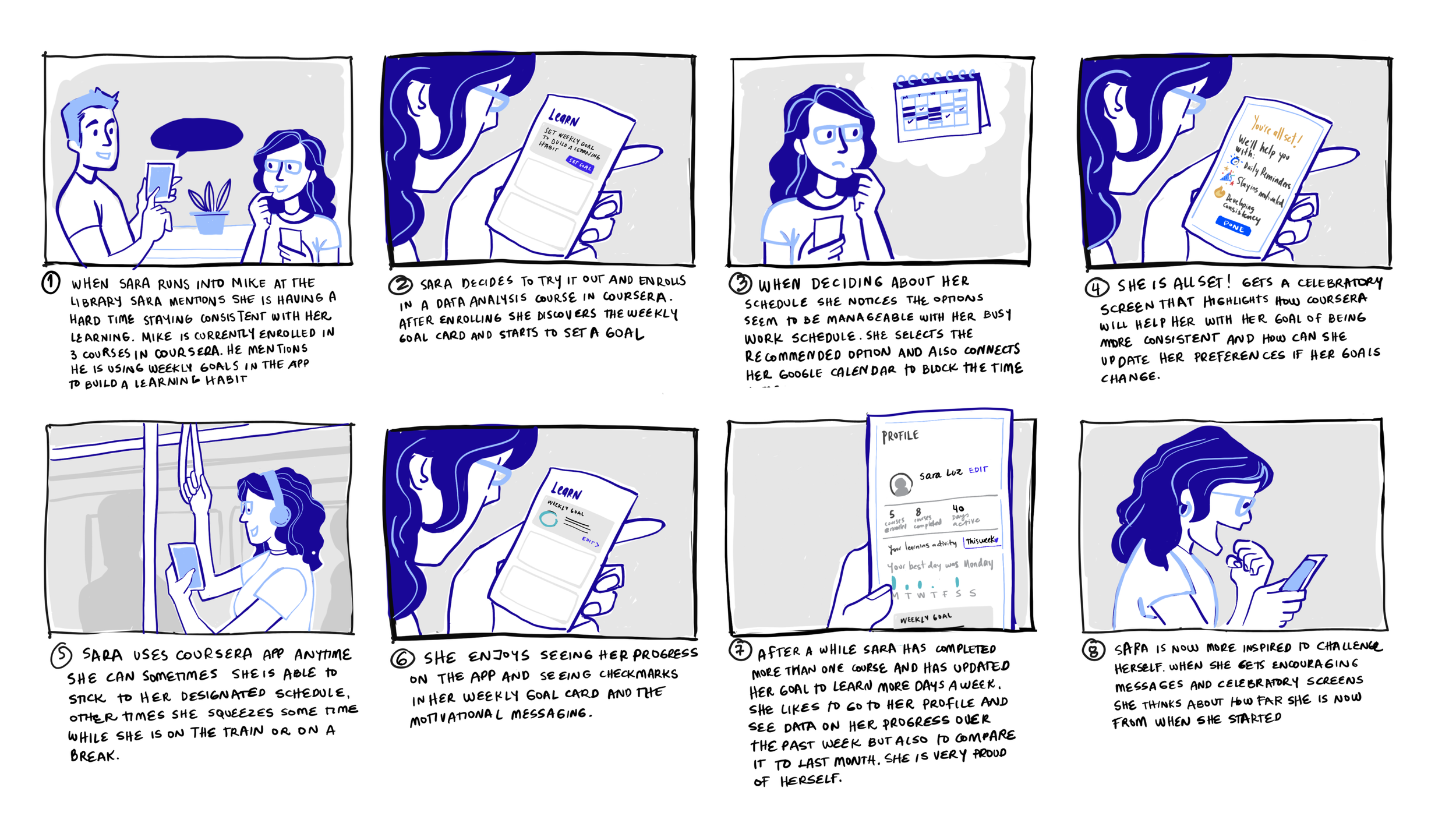I led mobile app design and key initiatives to close the gap between web and mobile, unifying fragmented experiences and bringing essential learning features to every device.
Role
Lead Product Designer — Mobile Apps
Timeline
2021
Helping users to build a learning habit
The challenge
Coursera had traditionally measured success through single course completion. But after digging into user behavior, it became clear that learners were more interested in developing a consistent learning habit, rather than just completing one course. However, our web experience only allowed users to track their progress in a single course, not across all their enrolled courses.
To address this, the team introduced a new metric: Paid Active Retention, which prioritized consistent activity on Coursera over progress in a single course. Our goal was to increase overall activity on the platform, focusing this time on enhancing the app experience.
Research insights
Coursera Learners have made it clear that they wanted to build a habit of learning, but found it hard to stay motivated and make progress consistently. This was discouraging to learners and affecting item completion and overall active days.
What we knew
Our UXR team conducted extensive research, testing 18 concepts on motivation mechanics for habit building, ultimately grouping them into six main categories: Progress Trackers, Positive Reinforcements, Social Experiences, Financial Incentives, Consistency Nudges, and Others.
The recommendation? Focus on Progress Trackers and Positive Reinforcements. These had the potential to motivate learners and deepen their emotional connection with Coursera.
UXR Insights
-
The progress summary concept, which combined all learner activity into a digestible format, resonated the most with users. They also appreciated monthly and weekly activity trackers, which could help them identify patterns and stay consistent.
-
Learners were drawn to content that celebrated their progress, adding delight to their journey—something that was missing from our current experience.
Web Analytics
Since we didn’t have similar features in the app, we turned to data from our weekly digest emails to understand how summaries influenced learner behavior. The data was promising: learners who received the weekly activity summary had a +4.59% increase in items completed and a +5.41% increase in active days compared to those who didn’t receive the emails.
Behavioral Patterns in Habit-Building Apps
To ground our habit system in behavior science, I reviewed over 15 habit-forming apps—across wellness, learning, fitness, and productivity.
We identified features that emphasized flexibility, progress, and intrinsic motivation—principles we brought into our design direction.
I was particularly focused on:
How apps reinforce success (celebration, stats, streaks)
Friction levels in goal setting
Tone of motivational messaging
Invisible vs. visible tracking
Collaborative sketching
To spark creativity, we used a Crazy 8’s exercise, encouraging the team to explore multiple options quickly. Each member pitched their ideas, and we voted on the ones we believed would have the most impact—without considering the level of effort required.
Concept & Storyboarding
After the ideation session, I sketched initial concepts and discussed them with cross-functional partners and the design team. These were early explorations to personalize the experience based on user motivation. While they didn’t make it into the MVP, they shaped our thinking around tone and future customization.
To ground the behavior design in reality, I illustrated a learner scenario from setting a weekly goal to experiencing emotional payoff over time. This helped the team visualize the learner journey and reinforced our belief in gentle, human-centered behavioral design.
What we built
User Testing & Post Launch Results
Before moving forward, we conducted a quick user testing study. Collaborating with our PM, we defined the goals and scope of the study and partnered with my designer to write the user testing script.
The results were very positive. The feedback not only validated our MVT but also gave us ideas for future phases, such as allowing users to customize their goals, set preferred times of day, integrate calendars, and more.










